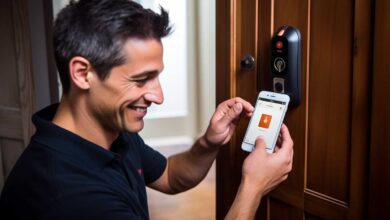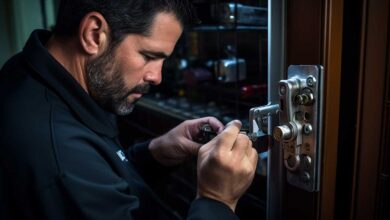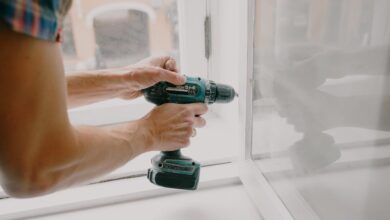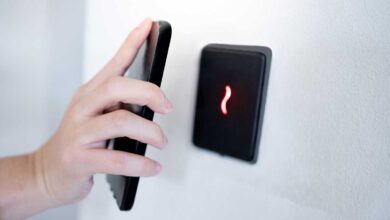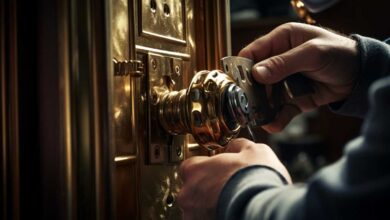Unlocking the Process of Apartment Key Duplication: A Step-By-Step Guide
KEY TAKEAWAYS
Apartment key duplication is a common service sought by many, but the process behind it is often misunderstood. While it might appear straightforward, the process is intricate and demands a high level of accuracy and expertise. This is especially true when dealing with apartment keys, which often come with varying degrees of security features and complexities.
Whether you’re a property manager, a tenant, or simply curious, this guide will provide valuable insights into the world of key duplication. Let’s dive in to unravel the complexities of apartment key duplication.
The Basic Duplication Process
The journey to duplicating an apartment key usually begins with a detailed inspection of the original key. The locksmith discerns the key type and assesses its condition to decide on the most suitable duplication technique.
Following this, the locksmith positions the original key on one side of the duplication machine and a blank key on the other. This alignment is vital to ensure a precise copy. Once the keys are secured, the machine is set in motion with the press of a switch or button.
The duplication machine operates by employing a cutting wheel to shape the blank key. Concurrently, a guide traces the original key’s form, guaranteeing an exact duplicate is created. The cutting wheel accurately replicates the original key’s grooves and cuts onto the blank key.
Upon completion of the cutting process, the key is typically buffed to eliminate any sharp edges and metal fragments, making it safe to handle. The freshly duplicated key is then tested in the lock to confirm its functionality. It’s important to note that this process can slightly differ depending on the key type and the sophistication of the locksmith’s equipment.
Types of Apartment Keys
Apartment keys come in a plethora of designs, each with unique characteristics that can affect the duplication process.
-
Standard Keys: These are the most prevalent, featuring cuts on one side that correspond with the lock’s internal pins. When the key is cut accurately, the pins align, allowing the lock to turn.
-
Double-Sided Keys: These keys have cuts on both sides, making them reversible. The duplication process for these keys is more intricate as it involves cutting on both sides of the blank key, necessitating a specialized machine.
-
Four-Sided Keys: As the name suggests, these keys have cuts on all four edges. They are often used in high-security locks, which makes their duplication process more complex.
-
Paracentric Keys: These keys are easily identifiable due to their unique, non-circular shape. Paracentric keys are designed to be difficult to pick, providing an additional layer of security. However, this also adds complexity to the duplication process.
-
Tubular Keys: These keys, often found in bike locks or vending machines, have a circular stem with cuts around the circumference. They are also occasionally used in apartment locks.
-
Magnetic Keys: These modern keys utilize magnets to move the lock’s pins to specific positions. While they provide increased security, duplicating them requires specialized skills and technology.
Identifying the type of key you need to duplicate is crucial in choosing the right locksmith, as not all locksmiths are equipped or experienced to handle every key type.
Factors Affecting Key Duplication Process
There are several elements that can influence the key duplication process. Being aware of these can help you prepare for any potential challenges or costs. The key factors are the complexity of the key and the locksmith’s equipment and expertise.
The complexity of your key is primarily determined by its type, as outlined in the previous section. The more intricate your key, the more detailed and potentially time-consuming the duplication process may be. Conversely, the locksmith’s equipment and skill set are also significant.
Not all locksmiths are equipped to handle all types of keys, and more sophisticated keys may necessitate advanced machinery for precise duplication.
Key Complexity
The intricacy of a key’s design plays a crucial role in the duplication process. This complexity is determined by the uniqueness of the key’s design, the quantity of notches it possesses, and any special security features it may have.
Consider a standard key with a single set of notches. Its simplicity allows for a quick and straightforward duplication process. Most locksmiths are equipped with the necessary machinery and expertise to replicate such keys without any hitches.
However, the scenario changes when we delve into more complex keys. Double-sided keys, four-sided keys, or tubular keys, for instance, demand a more rigorous duplication process. These keys feature multiple sides with detailed cuts, necessitating specialized machinery and additional time for accurate replication.
Adding to the complexity are magnetic keys and paracentric keys. These keys are crafted with advanced security measures in mind. For example, magnetic keys operate on precise magnet orientation to interact with the lock, while paracentric keys boast a unique design to discourage picking. Their sophisticated technology necessitates specialized machinery and skills for precise duplication.
Equipment and Locksmith Skills
The key duplication process is also heavily influenced by the locksmith’s abilities and the equipment at their disposal.
The range of key duplication equipment spans from basic manual machines to advanced electronic devices. Manual duplicators are ideal for standard keys. They function by simultaneously moving a blank key and the original key against a cutting wheel, effectively transferring the notches or grooves of the original onto the blank.
However, complex keys often necessitate more advanced machinery. For instance, a four-sided key requires a machine capable of cutting all four sides. Similarly, magnetic keys or those with high-security features might necessitate electronic key-cutting machines. These machines employ software to decipher the specifications of the original key and engrave those exact specifications onto the blank key.
The locksmith’s skills also play a pivotal role. It’s not just about knowing how to handle different key types but also about mastering various machinery. A proficient locksmith will be well-versed in a variety of key types, understand their mechanisms, and be able to pinpoint the correct blank key and settings to use on the duplicating machine.
Thus, regardless of whether you have a standard key or a high-security key, the right locksmith can guarantee a flawless duplicate key, providing you with reliability and peace of mind.
Common Challenges in Apartment Key Duplication
Key duplication may seem like a simple task, but it’s not without its share of obstacles. These can range from dealing with worn-out keys and grappling with intricate security features to navigating legal restrictions associated with certain key types. By recognizing these potential roadblocks, you can gain a deeper appreciation of what it takes to create an exact replica of your apartment key.
Handling Worn Out Original Keys and Legal Restrictions
Over time, keys can deteriorate, twist, or have their notches smoothed over, making it challenging to produce an accurate duplicate. Despite having cutting-edge equipment, a severely worn-out key might be beyond duplication. In such instances, rekeying, where the locksmith modifies the lock to match a new key, might be the only solution.
On another front, legal restrictions can also pose a challenge. Some high-security keys bear the inscription ‘Do Not Duplicate’. These keys are usually patent-protected or part of a restricted key system implemented by landlords or apartment complex managers. Duplicating these keys without the necessary authorization is against the law.
So, if you’ve misplaced a ‘Do Not Duplicate’ key or need an additional one, you’ll typically require permission from the property manager or the key system’s administrator.
Understanding these challenges can help set realistic expectations when you’re looking to duplicate your apartment keys. It also explains why direct duplication may not always be possible.
Maintaining Security During Key Duplication
The process of key duplication, while often necessary, should never jeopardize the security of your apartment. Keys are more than just pieces of metal; they are the guardians of our personal spaces. Therefore, it’s crucial to ensure that the process of creating a duplicate does not undermine this security.
Key ownership verification and the secure disposal of key shavings are two critical aspects of maintaining security during key duplication.
Verification of Key Ownership and Safe Disposal of Duplicate Key Shavings
A reputable locksmith will always prioritize security during the key duplication process. One of the ways they do this is by verifying key ownership. This could involve checking identification or other documents to confirm that you are indeed the rightful owner of the key or have the necessary authority to create a duplicate. This step is vital in preventing unauthorized key duplication, which could lead to unwelcome access to your apartment.
Another essential security measure is the proper disposal of key shavings produced during the duplication process. These tiny metal fragments, if not handled correctly, could provide a potential security risk. Crafty individuals might retrieve these shavings and, through careful analysis, deduce the shape of the original key. To avoid this risk, trustworthy locksmiths ensure the safe disposal of these shavings, often through recycling. This method is not only secure but also eco-friendly.
Frequently Asked Questions
1. What is the process involved in apartment key duplication?
Apartment key duplication involves copying the original key’s pattern onto a new key blank. This is typically done using a key-cutting machine, which precisely forms the shape of the key to match the original.
2. Is there a need for the original key to duplicate a key?
Typically, yes, an original key is necessary to create a duplicate key. This ensures that the copy is precise and will function correctly in the lock. Without the original key, a locksmith would need to examine the lock mechanism directly.
3. What is the duration of an apartment key duplication process?
Assuming a professional is doing the job and has immediate access to the appropriate equipment, a key duplication process usually takes about 1-2 minutes. This timing can vary based on the complexity of the key’s pattern.
4. Is authorization required to duplicate an apartment key?
Yes, consent is typically required to duplicate an apartment key. This is based on a need to maintain security and ensure that unauthorized individuals do not gain access to residences.
5. How much does apartment key duplication usually cost?
Costs for key duplication can vary widely based on local rates and the type of key. Basic keys can generally be duplicated for a few dollars, while more complex keys might cost upwards of $20.
6. Is every key capable of being duplicated?
While most common keys can be duplicated, certain keys termed as “do not duplicate” or security keys with specific patterns might not be duplicated unless authorization from the key owner or a high-security locksmith is obtained.
Choosing the Right Locksmith for Key Duplication
Selecting an appropriate locksmith for your key duplication needs is a pivotal part of the key duplication process. This decision affects not only the accuracy of the duplicate key but also the security of your apartment. A competent locksmith will have a comprehensive understanding of various key types and locking systems, coupled with the practical skills to create a precise duplicate.
Need assistance with a commercial locksmith? Get in touch with professional commercial locksmiths to safeguard your place today!
